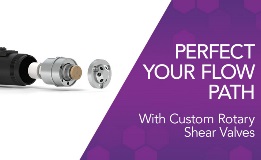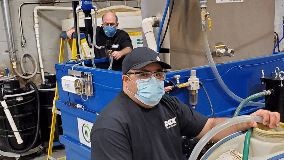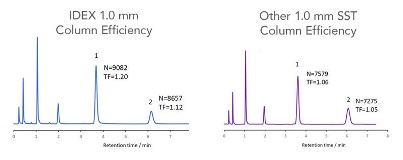

-
Protecting the Environment is an Every Day Effort at IDEX Health & Science
Apr 15, 2022 by IDEX Health & ScienceOn April 22nd we celebrate Earth Day, but we are committed to protecting the environment every day. View recent projects at our facilities that have reduced waste, prevented pollution and conserved resources.
Full story
-
IDEX Health & Science Keeps to Project Deadlines with Moldflow
Mar 17, 2022 by IDEX Health & ScienceIDEX Health & Science was featured by KETIV in a customer success story that solved leaks and voids in a prep scale degasser.
Full story -
Always Consider the Chemical Environment in Your Flow Path
Mar 7, 2022 by IDEX Health & ScienceChemical compatibility in your application is key. If incompatible chemicals contact a fitting in your instrument, your flow path could be compromised. There are many sources for up-to-date information regarding chemical compatibility including the manufacturer of the fittings you have chosen to use. We highly recommend you refer to one of these sources before finalizing your fittings selection.
Full story
-
Breaking the Bias: CNC Machinist is Proud to be in the Girls Club
Mar 7, 2022 by IDEX Health & ScienceWe celebrate International Womens Day by honoring the women of IDEX who are part of a global workforce. Check out this story about our CNC Machinist, Lynn Baker.
Full story
-
When it Comes to Custom Manifolds Speed in Development is Key
Mar 7, 2022 by IDEX Health & ScienceCheck out our case study where time-to-market was key for the customer. We were able to deliver a custom manifold with iterations made during development
Full story
-
How Well Do You Know Your Valve?
Mar 2, 2022 by IDEX Health & ScienceUsing an optical profilometer and microscopes, our team of experts analyze the critical components of rotary shear valves to design your best flow path.
Full story
-
Is Your Flow Path Aligned?
Mar 2, 2022 by IDEX Health & ScienceOvercome misalignment and poor flow by partnering with our team of experts at IDEX Health & Science to evaluate and optimize your valve design.
Full story
-
Coolant Recycling Process Eliminates Truckloads of Wastewater
Feb 7, 2022 by IDEX Health & ScienceWith the help of a SmartSkim machine, IDEX Health & Science can now recycle coolant onsite, reducing wastewater production by 85%.
Full story
-
2022 Optics Photo Contest
Jan 28, 2022 by IDEX Health & ScienceShare your best scientific images that express the art of fluorescence in our optics photo contest.
Full story
-
Enhance Chromatographic Performance with Robust 1.0mm Columns
Jan 10, 2022 by IDEX Health & ScienceEngineered for robustness in microbore UHPLC applications, learn more about our column with extremely smooth ID surface finish and 40K packing pressure.
Full story
